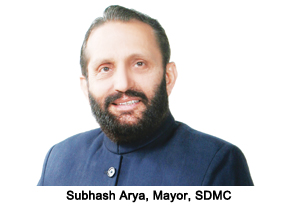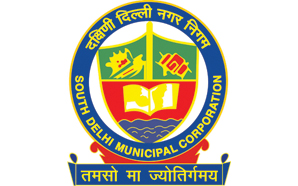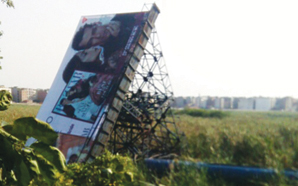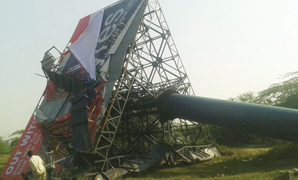Home » Viewpoints » "OOH fraternity has gone overboard in misusing grey areas of OAP"
"OOH fraternity has gone overboard in misusing grey areas of OAP"
By M4G Bureau - November 16, 2015
As part of its demolition plan, SDMC is not only pulling down the hoardings but also destroying the structures so that they cannot be re-used. The idea is to completely remove all illegal media from the capital.
 Despite having an Outdoor Advertising Policy (OAP) since 2007, it's only lately that the capital's outdoor advertising fraternity has seen some major unrest. Divided into three zones, (NDMC), East (EDMC) and South (SDMC), Municipal Corporations claim to balance safety, aesthetics of the city and revenues through media formats like hoardings, wall wraps and unipoles, while the OOH fraternity is reported to have gone overboard with the misuse of grey areas in the OAP. Along with other two zones, SDMC went on a major drive to pull down hoardings and structures all over south zone. Executed in a few phases, the drive is still on which has created much uproar among the gentry and few cases lodged in the High Court too. In a chat with Outdoor Asia, Subhash Arya, Mayor, SDMC, throws light on the grey areas of OAP, violations and defacement of the city. Edited excerpts.
Despite having an Outdoor Advertising Policy (OAP) since 2007, it's only lately that the capital's outdoor advertising fraternity has seen some major unrest. Divided into three zones, (NDMC), East (EDMC) and South (SDMC), Municipal Corporations claim to balance safety, aesthetics of the city and revenues through media formats like hoardings, wall wraps and unipoles, while the OOH fraternity is reported to have gone overboard with the misuse of grey areas in the OAP. Along with other two zones, SDMC went on a major drive to pull down hoardings and structures all over south zone. Executed in a few phases, the drive is still on which has created much uproar among the gentry and few cases lodged in the High Court too. In a chat with Outdoor Asia, Subhash Arya, Mayor, SDMC, throws light on the grey areas of OAP, violations and defacement of the city. Edited excerpts.Delhi's overall OOH landscape came under colossal scrutiny lately, with SDMC in news most of the time. Can you share your thoughts on the same.
We work through three different zones, East, North and South. South Delhi has the most premium traffic touchpoints and marketplaces. However, even NDMC and EDMC are on the demolishing drive with equal energy. SDMC took the lead, as it was responsible for demolishing some major hoardings at locations with highest traffic. With leading brands, advertisers, media owners and agencies being a part of it, we were perhaps mostly in news.
 There are many laws and by-laws relating to sizes and directions of hoardings & wraps,that have not been implemented largely. What could be the reason behind this?
There are many laws and by-laws relating to sizes and directions of hoardings & wraps,that have not been implemented largely. What could be the reason behind this?There have been some major noticeable violations over the years. For instance, according to official data, there are only 5,000 hoardings and wall wraps in the city, while in reality the number is much higher.
The Outdoor Advertising Policy that we are following right now, was re-structured and enacted in 2007. We have certain policies pertaining to sizes, angle, directions etc. The idea of the consolidated policy is to cut the already-saturated clutter of the city, maintaining aesthetics as well as to promote safe practice. For example, we cannot let a hoarding block road signage, simply because we can't risk our road safety. Many locations on the high density Ring Road were part of this violation.
According to our latest monitoring and observation, advertisers took the better of the present OAP. For example, permission for a single side unipole was taken, but put up with double sides. Many a times, a hoarding parallel to the road was permitted, but the same was erected in a 90 degree angle. At South Extension Part I, a major traffic touchpoint, many hoardings violated the law by standing perpendicular to the road instead of going parallel.
 Airport is generally an attractive location for varied brands. GMR received permission for a number of hoardings of particular lengths and widths. However, they finally came up with larger hoardings, sizes of which were a sum of a number of small hoardings.
Airport is generally an attractive location for varied brands. GMR received permission for a number of hoardings of particular lengths and widths. However, they finally came up with larger hoardings, sizes of which were a sum of a number of small hoardings.These observations revealed major violations and prompted us to take immediate actions against illegal media.
How are you planning to eliminate the gap in the tendering process?
Everything is simple and transparent in our tendering,where rules and laws are clearly mentioned on our website. There is practically no grey area.The current practice is simply a scenario of maximising the effect of one's brand, no matter if that involves violating laws. Everybody is trying to amplify the impact in a jungle of hoardings, even at the cost of safety or marred beauty of the city.
 It is often observed that illegal hoardings are re-installed once the demolition actions subside. What steps are you taking on that front?
It is often observed that illegal hoardings are re-installed once the demolition actions subside. What steps are you taking on that front?In 2012, after trifurcation of MCD into North, East and South, our functionality became separate. Even with that, our department in SDMC is equipped with only 15-20 people including four zones catering to 104 wards in South Delhi. As you can imagine, the monitoring process is difficult. However, now things are prioritised and deployments are better. As part of our demolition plan, we are not only pulling down the hoardings but we are also destroying the structures so that they cannot be re-used. We are also going to keep constant vigil over the same. The whole idea is complete removal of illegal media from the capital.
Digital is the future of OOH and Delhi is already a big part of it. Since it works on different technology, what policies do you have for digital OOH?
Currently, we have no available policy particularly for digital OOH and LED screens. However, we framed a new policy back in 2012 which has laws pertaining to that. But the new policy is yet to be implemented.
Yes, digital is the future of OOH in India, serving the purpose of aesthetics and information hand-in-hand. Although cost is currently raising many eyebrows, one should also follow the fact that prices in technology fall very sharply in India. We are working on various locations in the city that are technologically viable as well as aesthetically relevant. In about three years, I hope that Delhi would be a hub of digital OOH.

Stay on top of OOH media trends
Advertisement







